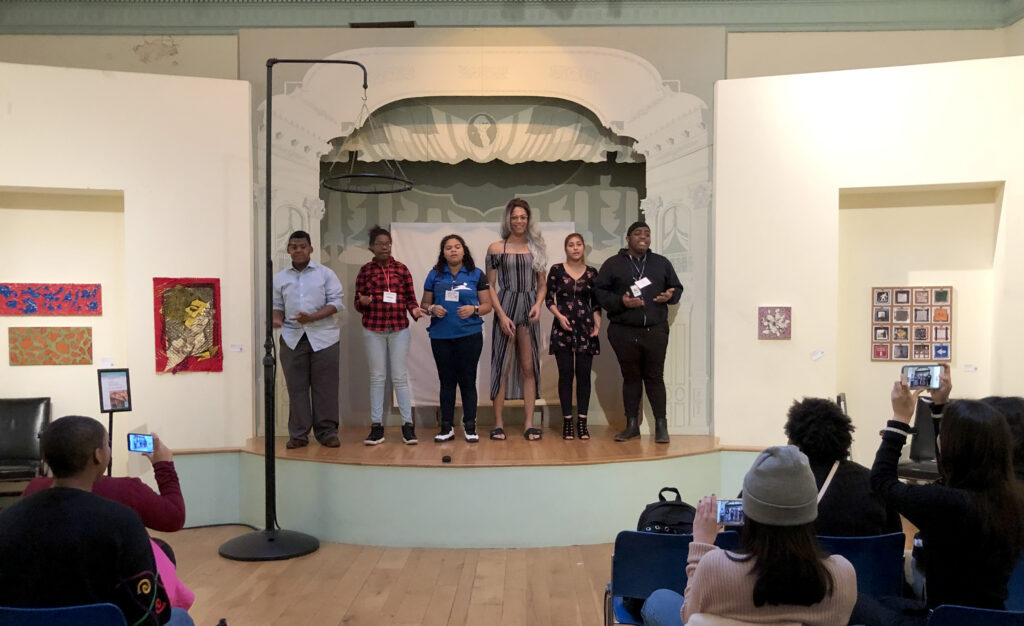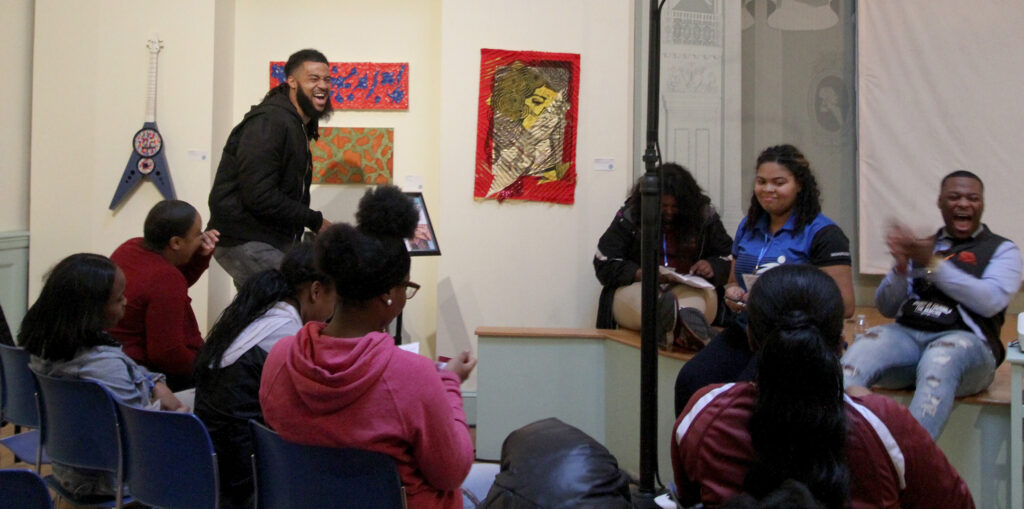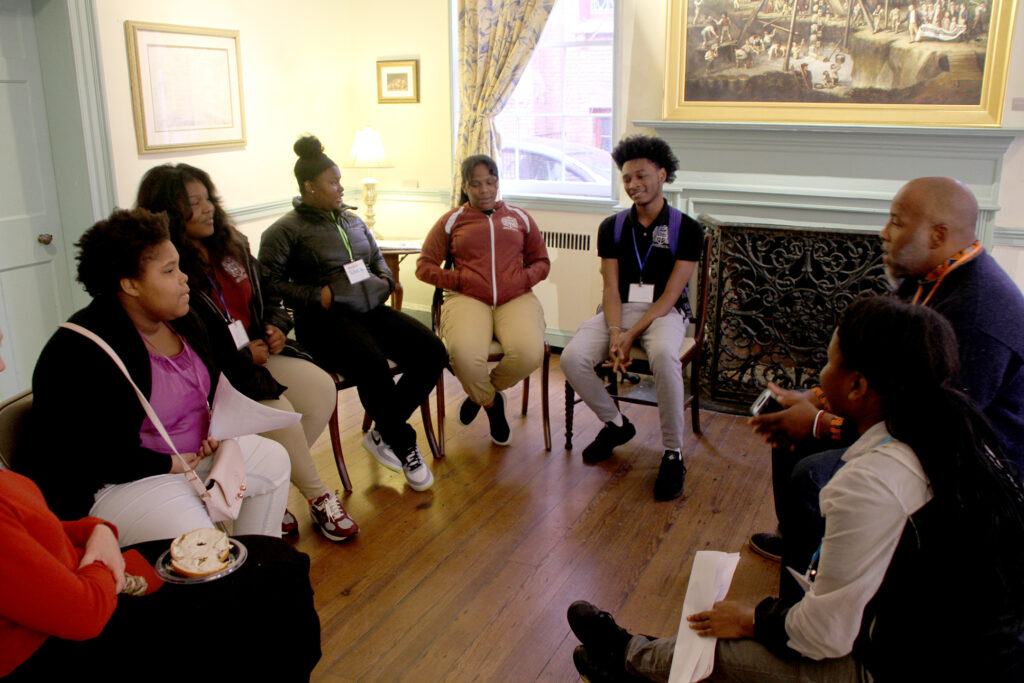#SayItLikeItIs
Around 40 Baltimore high school students participated in a series of storytelling events where they discussed the state of their neighborhoods, their schools, and their lives. They were then invited to create a design response to address their key concerns: they created a daylong symposium for area high school students.

Summary
Over the course of a year, West Baltimore high school students participated in a series of storytelling events where they discussed the state of their neighborhoods, their schools, and their lives. They were then invited to create a design response to address their key concerns. They chose to create a daylong symposium for area high school students. They brought in speakers to address ways they could cope with the high degree of violence in their schools and neighborhoods, how art could help promote their mental health, and ways to improve their school environments. The Peale Center hosted the conference. Its building’s legacy as Colored School Number One, the first segregated educational space for children of color in Baltimore, provided historical context. Museum studies students from nearby Johns Hopkins University supported the high school students’ efforts. Results from exit interviews supported findings from BMORE Than The Story.
Participating students had increased sense of agency over their lives and understanding of how their art and creative practice could help them cope with trauma.
Collaborators
Individuals: West Baltimore high school students, Simone Durham, Kevin Fleming, Destinie Howard, Lamontre Randall, Koli Tengella, Tinay’e Turner
Contributors: Tonika Berkley, Donté Brown, Marcus Henry, Mark Mason, Aaron Maybin, Changa Onyango, Duke Porter, Rashad Staton
Collaborating Institutions
The Peale Center, Johns Hopkins University, Augusta Fells Savage Institute of Visual Arts
Details
Keynote

Youth Engagement Specialist Rashad Staton gave the opening keynote.
The symposium took place at the Peale rather than at a school. Getting off-site was important for the students as they felt freer to talk about the issues in their lives and at school. During an exit interview, the students talked about the benefits of having hosted the event at the Peale versus their school. One student said, “It was like a weight was lifted. I was just like, ‘I can be myself.’ ”
Performance

The Augusta Fells Savage Institute of Visual Arts Positive Social Change Theater/Performing Arts group performed spoken word, poetry, songs, and dance during the event. The works, written by the students, highlighted the highlights and struggles of their lives. The students spoke of how important it was to express the struggles in their lives. As one said, “Just because we’re teenagers doesn’t mean we don’t have stress.”
They also said it was rewarding and empowering when others related to the content of their performances. Another student said, “I liked how we performed, how it went. It was so smooth. At the end, people were coming up to us, they really felt what we were saying. That just made me happy. I felt like, “Oh yeah, I’m finally getting to somebody. They are finally hearing me. They’re hearing all of us now.’ ”
Alt text: Six students stand on a small, raised stage. Seated audience members watch the performance.
Sessions

The symposium also included break-out sessions led by Aaron Maybin, a professional football player turned artist and activist; Lamontre Randall, activist and entrepreneur; Mark Mason, youth trauma expert; Changa Onyango, community activist; and Donté Brown, founder of Donte’s Boxing & Wellness Foundation.

These sessions offered more intimate settings for dialogue. “We got to have conversations,” one student said. “We talked about how we felt. It was loose.”

Students said the casual atmosphere helped them feel more comfortable addressing difficult topics such as violence in their neighborhood.